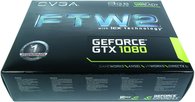 The iCX cooler is not completely new, but it has been slightly modified compared to the already known ACX cooler of the current FTW and SC models. However, what is completely new and in this form also not to be found at any other manufacturer are the real temperature sensors with a suitable microcontroller, which we will discuss in more detail.
The iCX cooler is not completely new, but it has been slightly modified compared to the already known ACX cooler of the current FTW and SC models. However, what is completely new and in this form also not to be found at any other manufacturer are the real temperature sensors with a suitable microcontroller, which we will discuss in more detail.
Unfortunately, as we did not receive the card until Wednesday afternoon, we had to compromise on the content. Technical know-how vs. Gaming benchmarks? We chose the former and realised that this was absolutely right.
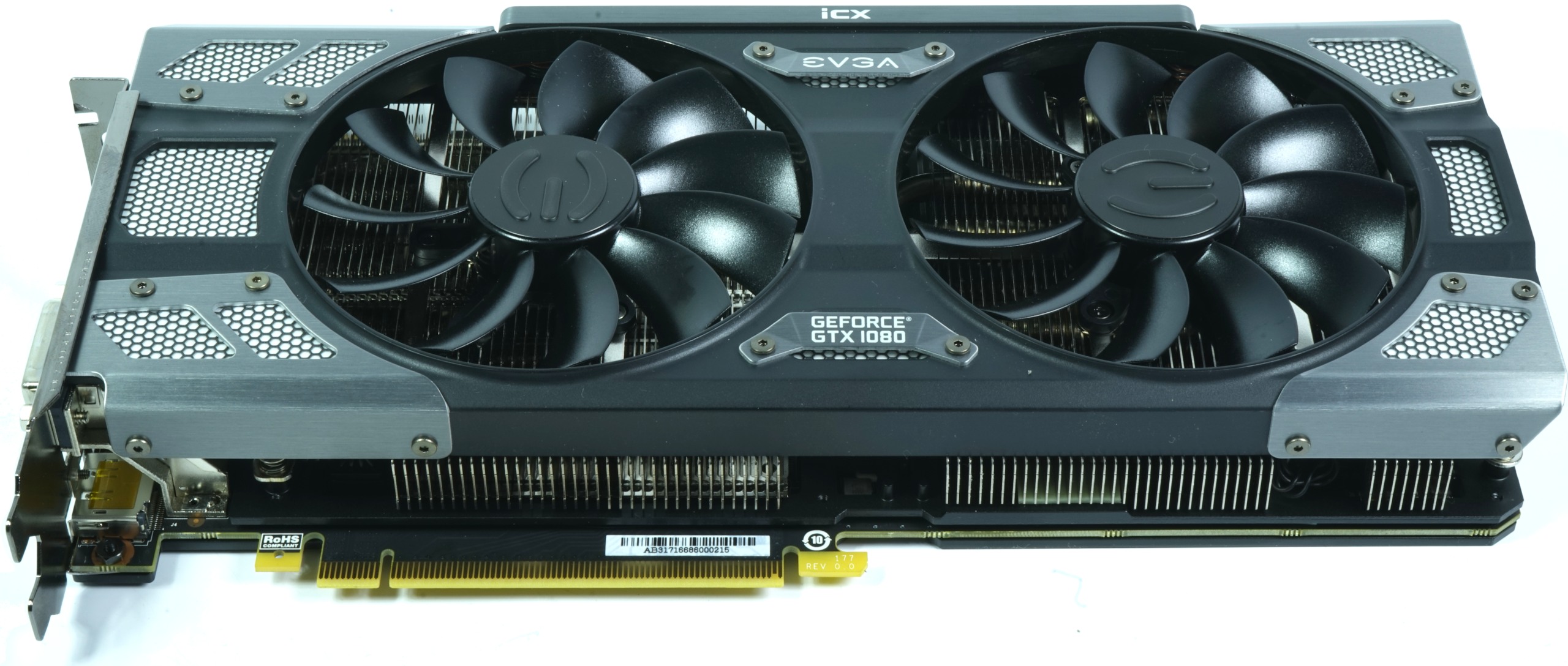
With this map, EVGA is especially aimed at those who have always wanted to have a little more control over the individual temperatures. Thus, the focus is more on the technical addition of the hardware as well as the new control software and less on the cooler used. This has also been modified, of course, but you can't expect a lot of miracles compared to the ACX model. Only significantly more and above all, also thicker thermal pads and an advanced design, but no new construction.
Test setup and methodology
For this test, we use our new measuring workstations and methods, which we had already described in detail in the basic article So Test Graphics Cards, as of February 2017.
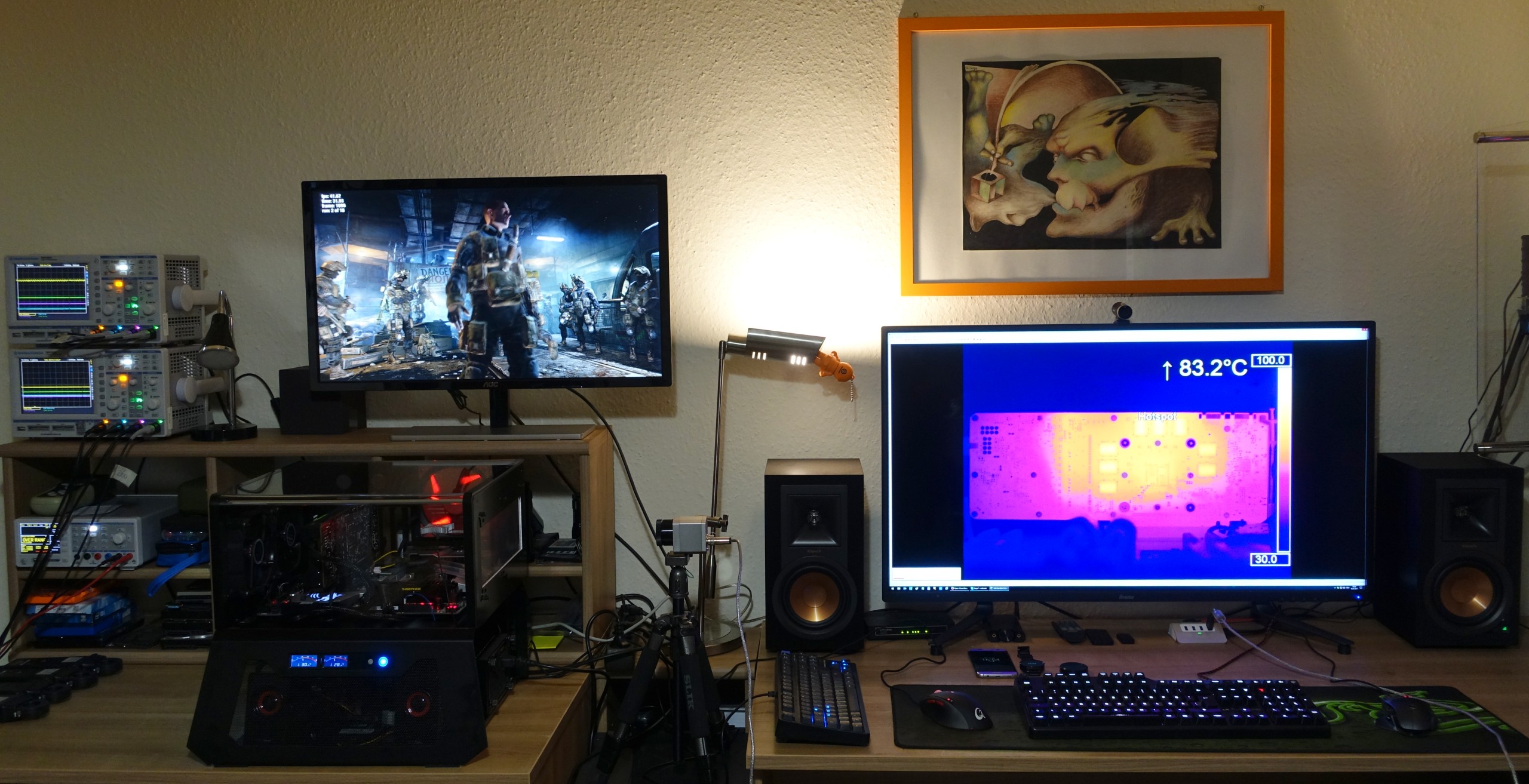
Short presentation
But what do buyers of the new EVGA GeForce GTX 1080 FTW2 with iCX cooler get when they open the box? The new card weighs a whopping 1050 grams and is still lighter than many competitors. With a installation length of 27.3 cm, a height of 12.5 cm, as well as a mounting depth of 3.5 cm (2 slots) plus 0.5 cm for the backplate, the outer dimensions are also more in the midfield.
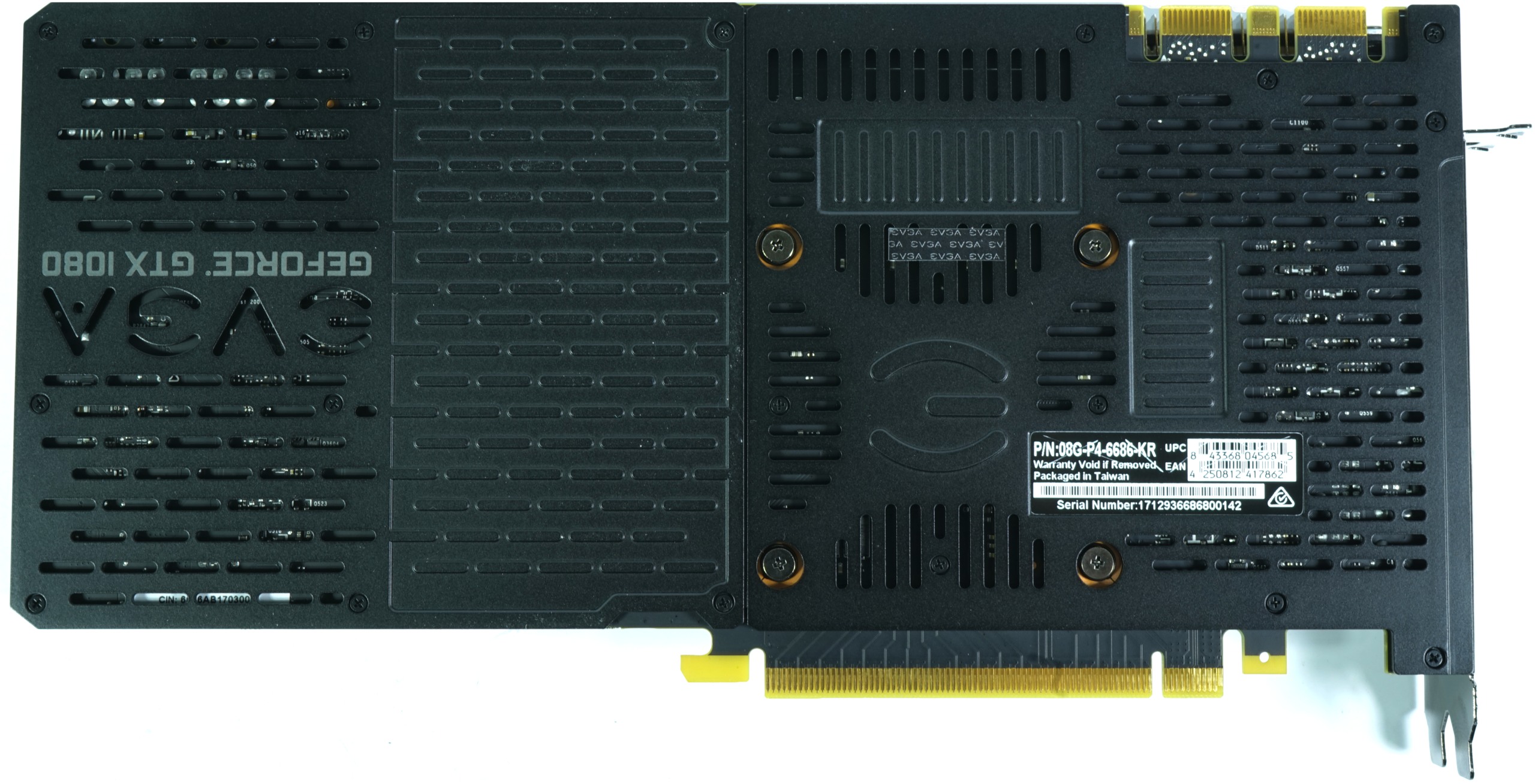 |
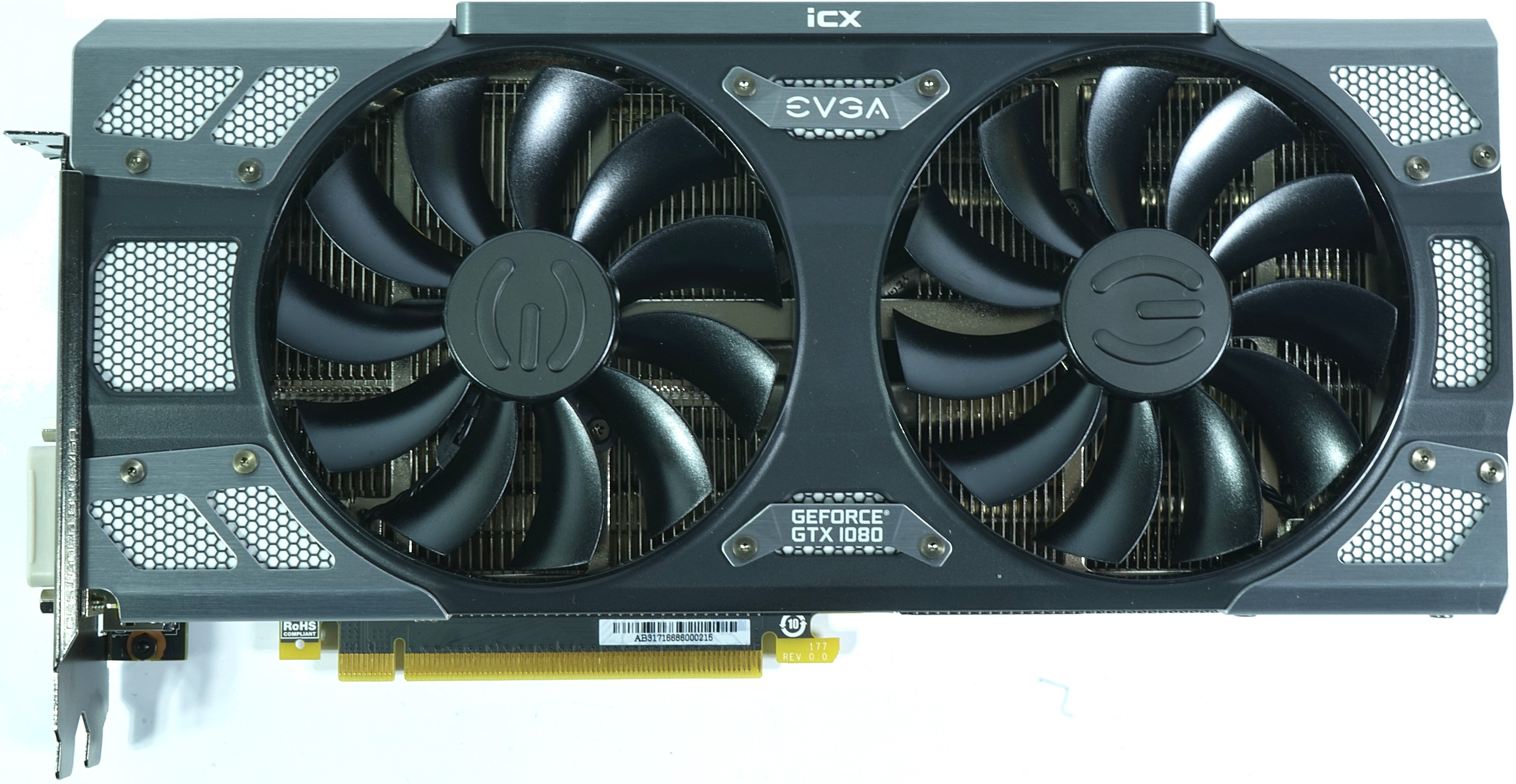 |
As in the past, the upper fan cover consists of anthracite-coloured plastic and aluminium applications, whereby the front is again illuminated with LEDs. A glance at the bottom already reveals that EVGA is once again relying on vertically oriented slats.

The top of the card is dominated by the two 8-pin PCIe power supply connectors, although it would also have done a combination of 8- and 6-pin jacks. But more on the actual power consumption later. Also new is the large panel with various display functions along with illuminated logo. We will also go into this in more detail in a little later.

At the end of the card we see the ends of three 6mm and one large 8mm heatpipe, with another short 8mm heatpipe at the top of the card and a slightly concealed 6mm heatpipe. All heatpipes are made of nickel-plated composite material, the capillary effect of which works quite independently of direction.
The slot panel has no secrets, but EVGA relies on a DVI-I port, three DisplayPorts and an HDMI port, as on the older models.
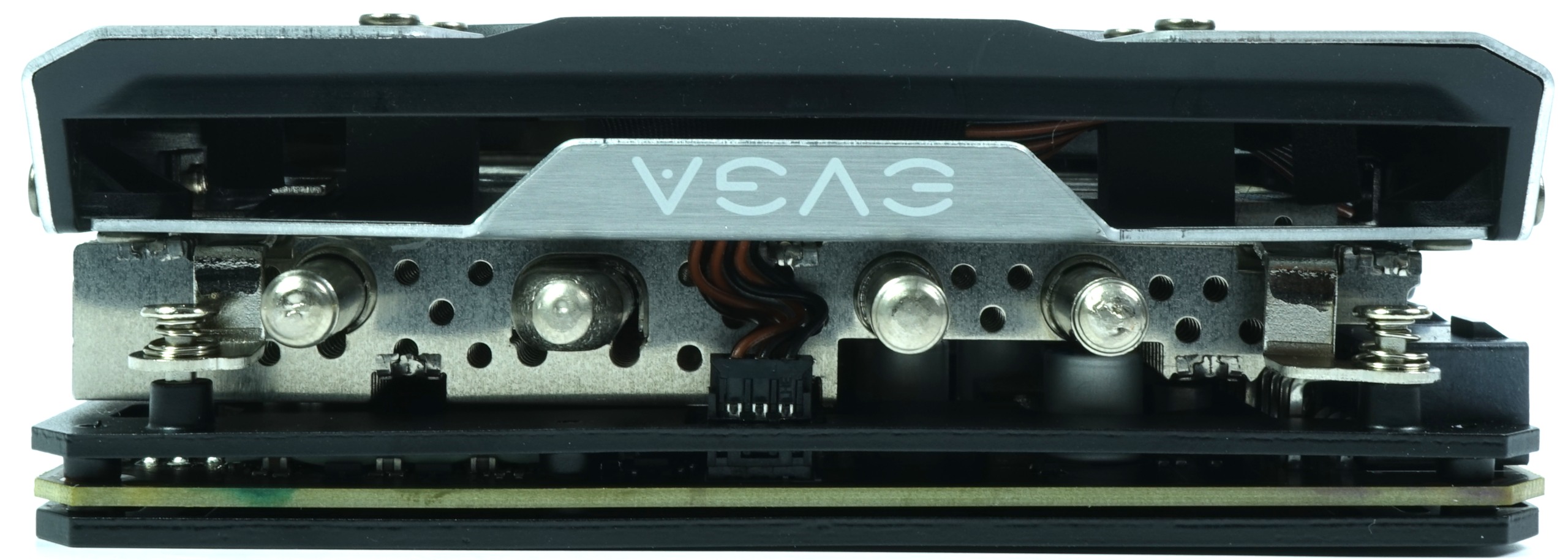 |
 |
Board layout and special features
Let's leave the cooler aside and look at the board. At first glance, we don't see any serious differences to the older version with ACX cooler, on the second one already. But nicely in turn, because the difference is in the detail. This starts with the two-part backplate, which has already been equipped with sufficient thermal conduction pads from the factory and thus also actively contributes to cooling.
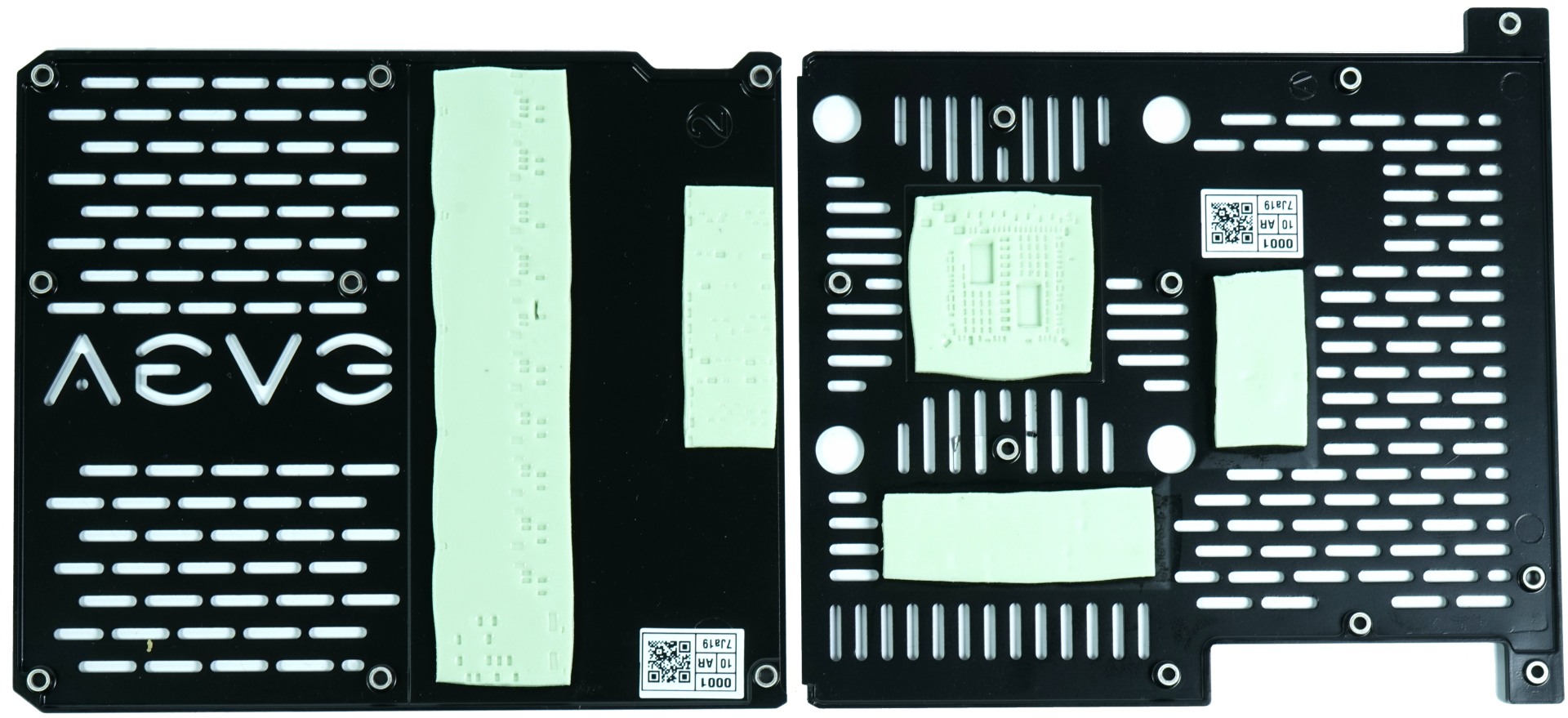
Micron's GDDR5X modules are once again used in memory, which are sold to the board partners along with Nvidia's GPU. A total of eight of these memory chips clocked at 1251 MHz (base) are connected to a 256-bit wide memory interface, resulting in a theoretical bandwidth of 320 GByte/s. You use a 170-pin package (instead of 190 pins at DDR5).
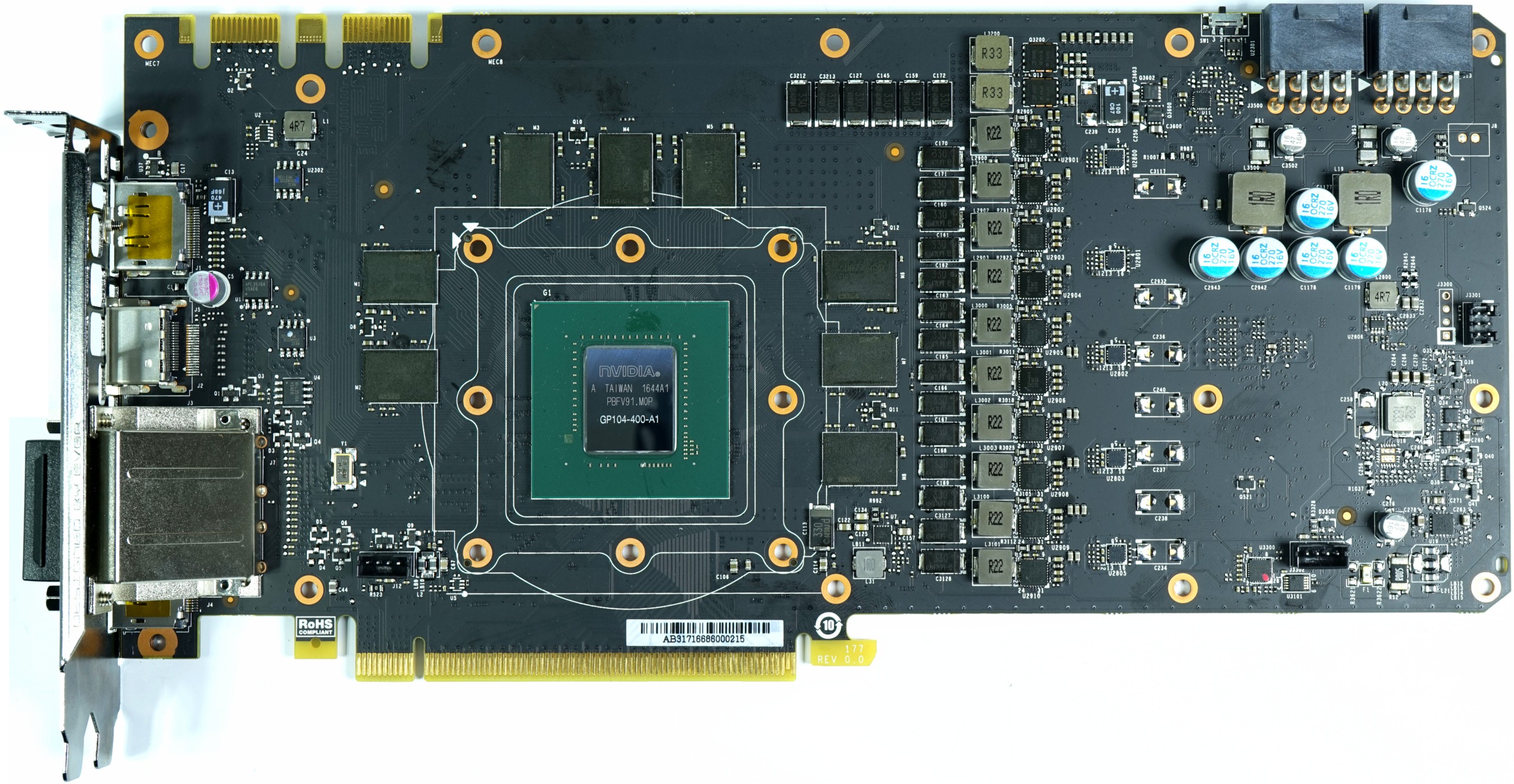 |
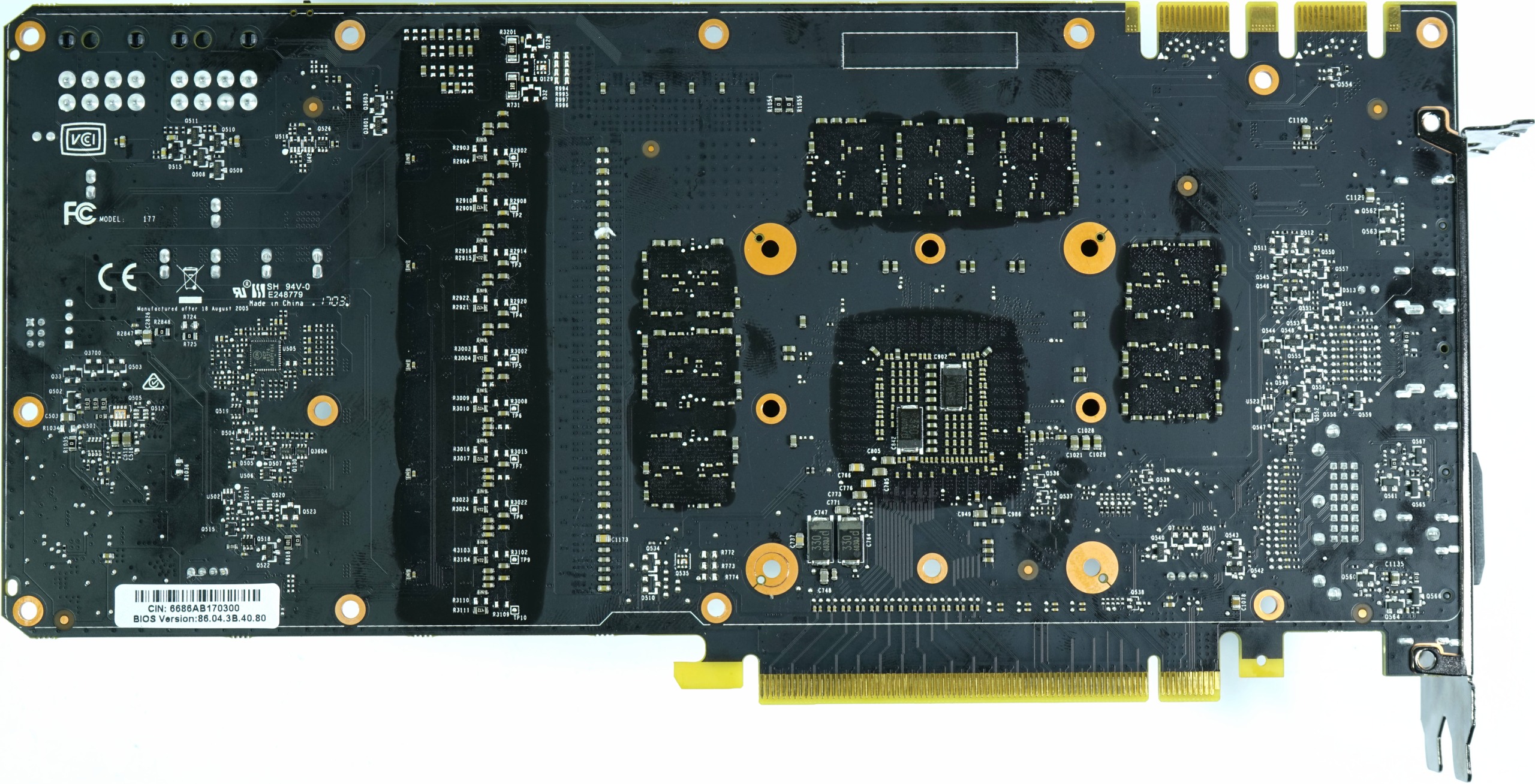 |
Like many other manufacturers, the INA3221 is a way of implementing current monitoring for monitoring flowing currents. As additional protection, however, EVGA has soldered a fuse that sits on the top of the board to protect the card from total destruction in the event of damage. In this way, one also actively encounters cases that are said to have occurred occasionally in board fires.
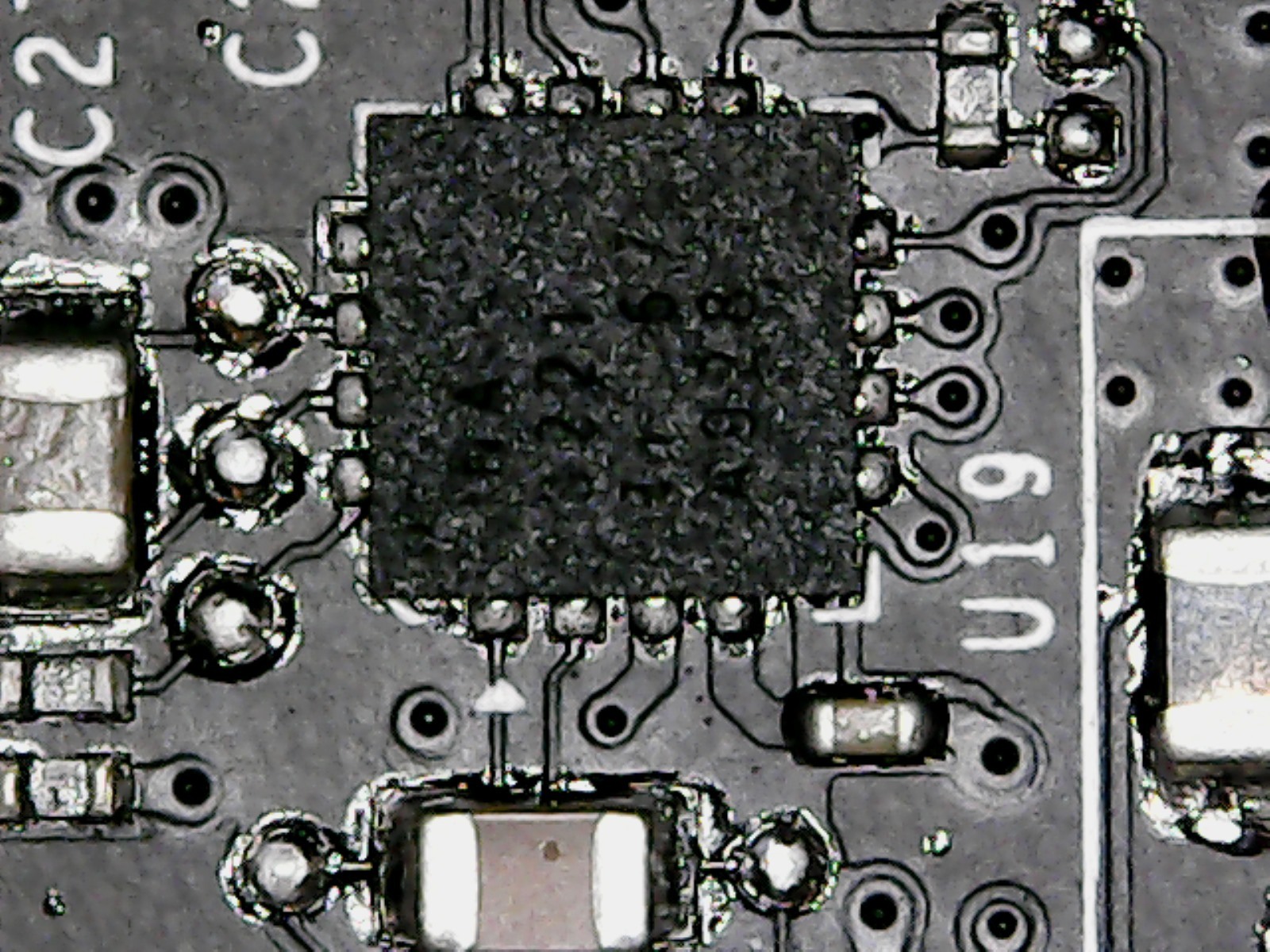 |
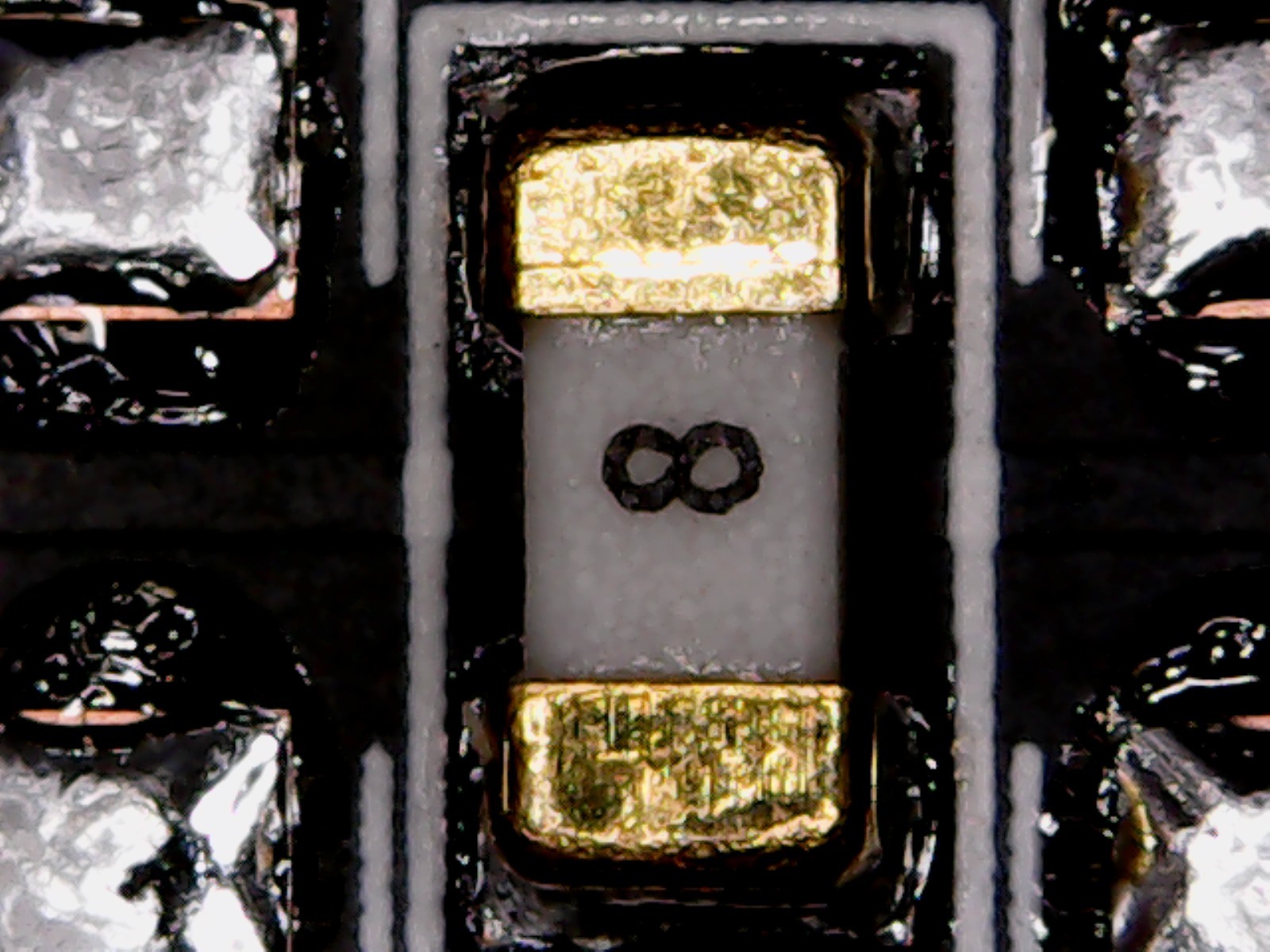 |
The memory is powered by two separate phases, which are controlled by an 81278, which this time does not come from NPC and is also in another package. This dual-channel output synchronous buck PWM controller enables phase interleaving and includes two LDO controllers. The gate drivers and the PWM-VID interface are also already integrated. The MOSFET is a dual-channel MOSFET from Siliconix, instead of the NTMFD4C85N from ON Semiconductor, which combines high- and low-side MOSFET.
 |
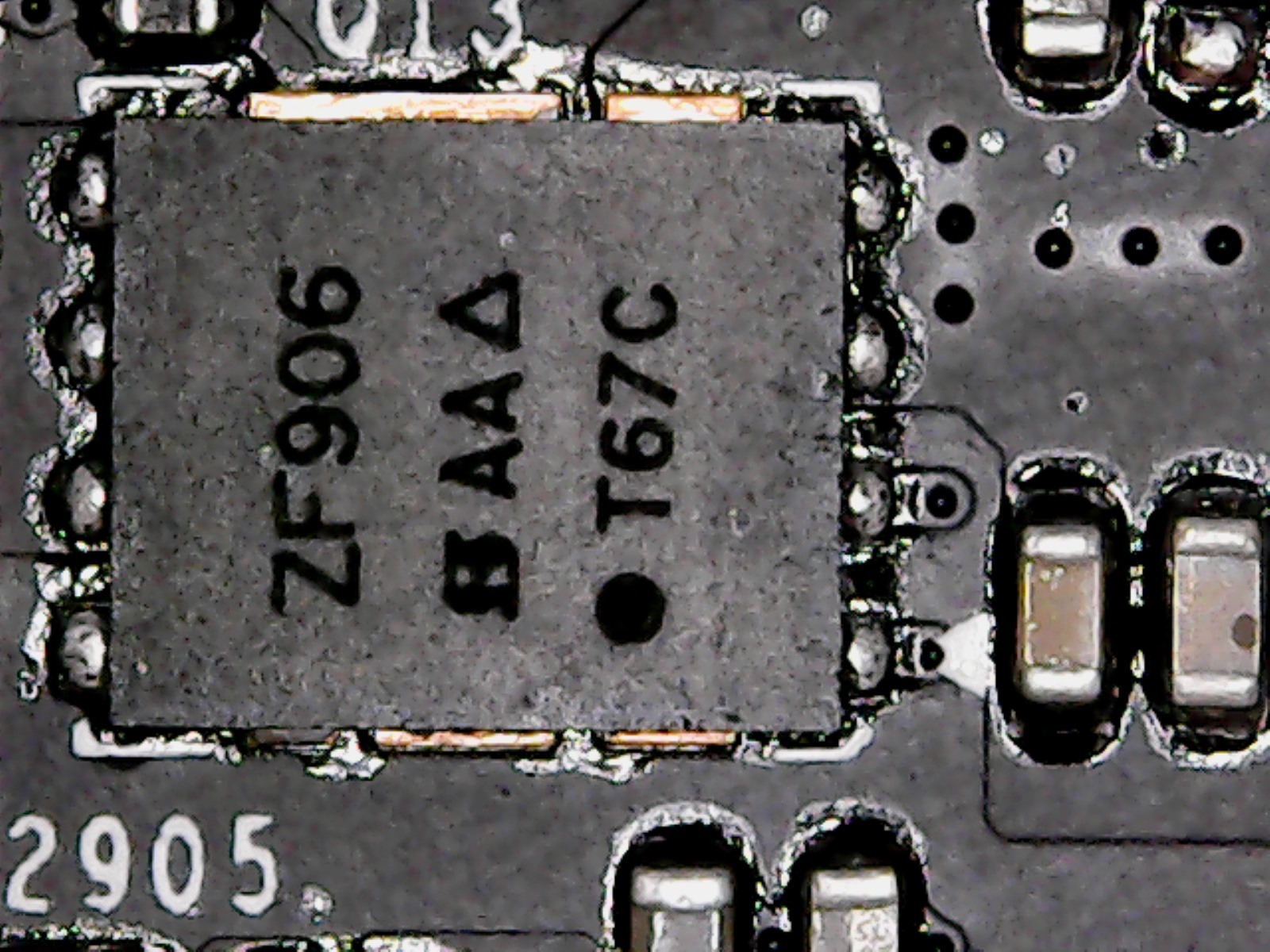 |
The 5+2-phase system has been taken over by the FTW and relies on the NPC81274 from ON Semiconductor as a PWM controller, which offers significantly more options for control than the usual .P9511P of Nvidia's reference design. Even when the GPU is advertised with 10 phases, the visual impression is deceptive. In fact, it is really only five real phases, which are split into two further converter trains.
This trick is not new and helps to better divide the flowing currents and create a larger cooling surface. In addition, the internal resistance is reduced by the parallel connection. This is solved by an NCP81162 from ON Semiconductor, a so-called current balancing and phase doubler, which also contains the gate and power drivers. For the voltage regulation, a highly integrated DG44E (instead of the NCP81382) is used per converter train, which combines the MOSFETs for the high and low-side as well as the Schottky diode in one chip.
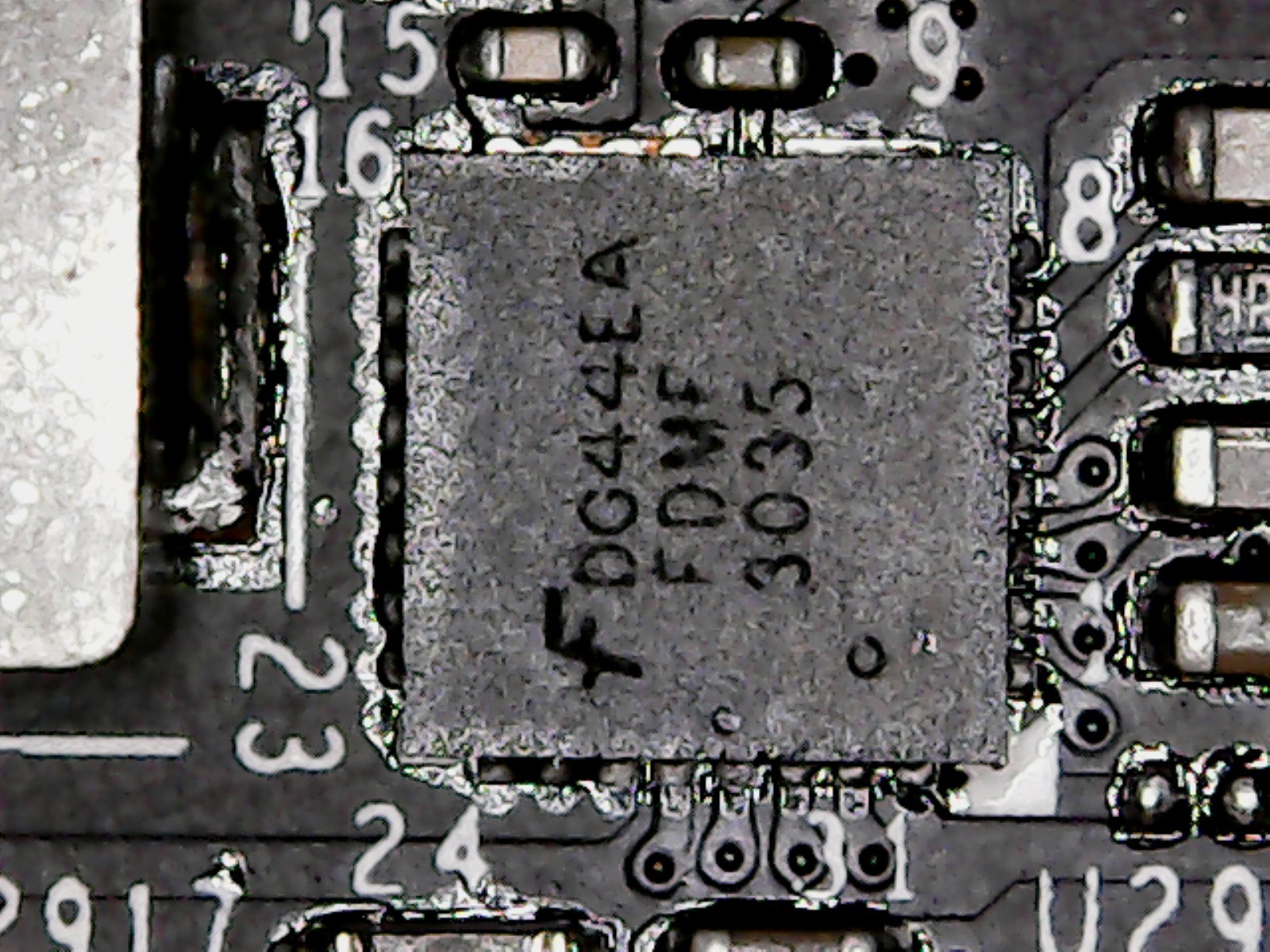 |
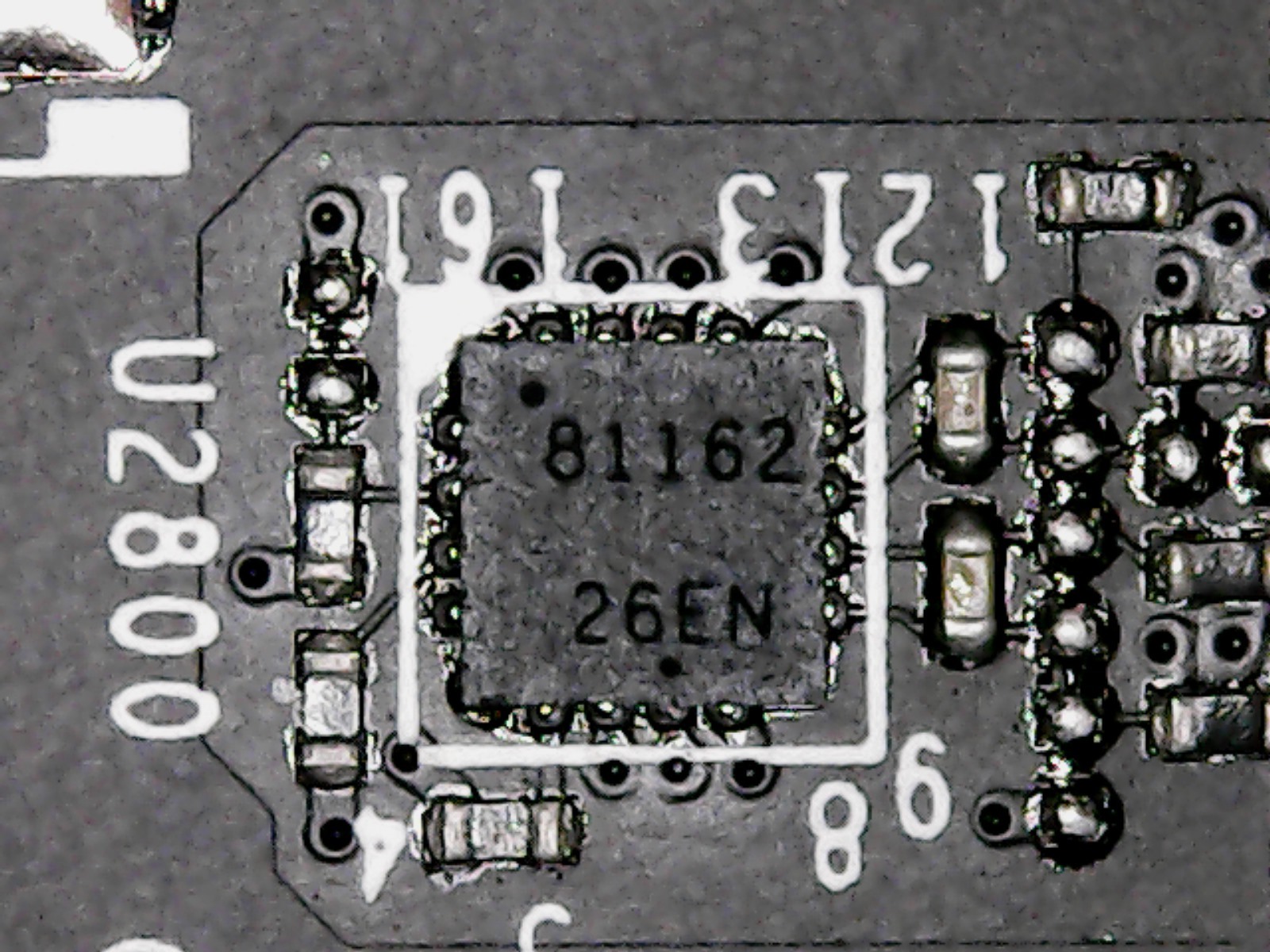 |
The coils are significantly smaller due to the doubled number of converter pulls, which can be quite advantageous in terms of space, because the flowing currents are also smaller and thus one can rely on smaller conductor diameters with the same inductance.
However, we have noticed some more components that have something to do with the map's monitoring option, which has already been mentioned. That's what we're looking at on the next page.


































Kommentieren